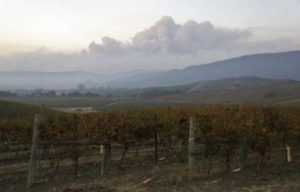

Two recent California wildfires are now counted among the most destructive wildfires in the state’s history, according to Insurance Commissioner Dave Jones. Insured residential and commercial losses from the Carr and Mendocino Complex fires top $845 million.

The insurance commissioner also provided an update on insured losses from the 2017 wildfires and 2018 Montecito mudslides and announced a new report that details how climate change contributes to wildfire losses.
“Our wildfire history tells the story of how our fire season has changed over the years from a four-month season to a year-round threat,” said Commissioner Jones. “Over the past two decades, the frequency and severity of wildfires has increased and caused significant property damage and the tragic loss of life in the wildland-urban interface areas of the state. Even more troubling is that areas once considered not to be high risk are now being scorched by wildfires.”
Data collected by the department shows that the widespread destruction from the Carr and Mendocino Complex fires resulted in damaging or destroying more than 8,800 homes, 329 businesses, and more than 800 private autos, commercials vehicles, and other types of property. More than 10,000 claims have been filed, totaling $845 million in insured losses.
According to CALFIRE, of the Top 20 Most Destructive California Wildfires, in terms of structures destroyed, 17 occurred after September 1st. Fire officials and experts warn that potentially the worst is yet to come.
“The Carr and Mendocino Complex fires not only caused staggering losses to thousands of Californians, they devastated entire communities and tragically cost many people their lives, and were among the most destructive fires in our state’s history,” added Commissioner Jones. “We should remember that the vast majority of California’s most destructive fires occurred after September 1st, and fire experts tell us that the worst fires for 2018 may still be ahead of us.”
The commissioner also released a new report, Trial by Fire: Managing Climate Risks Facing Insurers in the Golden State, which examines the challenges and opportunities associated with climate risk, climate change, and insurance. The report further shows how climate change is a contributor to wildfire losses in California and discusses Commissioner Jones’ efforts to get insurers to consider climate risk and the role insurance can play in addressing the three types of climate risks facing insurance companies: physical, transition and litigation risks.
“Our Trial by Fire report is an important contribution to a better understanding of how climate risk and climate change impact the insurance industry and Californians,” said Jones. “As Insurance Commissioner, one of my responsibilities is making sure insurance companies take into account and address climate-related physical, transition and liability risks, which can have consequences for insurers’ underwriting and the investing of their reserves. I’d like to thank our partners who joined us to author this report, which provides critical information about the climate-related risks for the insurance sector and Californians and what is and should be done to address those risks.”
The report was authored by Dr. Evan Mills, Principal of Energy Associates, a California-based energy and environmental consultancy, the climate policy experts at UC Berkeley School of Law’s Center for Law, Energy & the Environment, and the California Department of Insurance.
“The Trial by Fire report is unique in its simultaneous focus on insurance and climate change in the California context, and it is the first of its kind to emanate from the offices of a forward-looking state insurance regulator,” said Dr. Evan Mills. “Regulators are the natural entities to look into this, as their role is to safeguard the financial viability of insurers while maintaining availability, affordability, and adequacy of insurance for consumers. As we see in the wildfire data released today, regulators are also important compilers and distributors of raw data on loss costs.”
Co-authors from UC Berkeley School of Law, Ted Lamm and Ethan Elkind, along with climate change experts Alice Hill of Stanford University Hoover Institution and Dr. Ben Caldecott of the University of Oxford have provided statements supporting the Trial by Fire report.
Source: California Department of Insurance